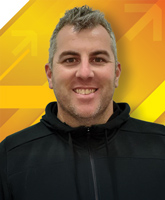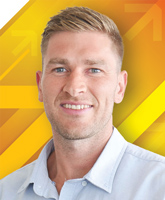| |
Feature Theory Presentation |
|

Robert Libbey
|
Ligamentous Articular Strain Techniques for the Shoulder
All delegates attend this presentation
This three-hour course provides a thorough, evidence-based approach to assessing and treating shoulder dysfunctions. Attendees will gain an in-depth understanding of how medial ligamentous and membranous connections contribute to lateral shoulder pain. Clinicians will learn specific anatomy, precise palpation and treatment techniques through detailed exploration of specific structures such as the sternoclavicular, costoclavicular, coracoid ligaments, and the glenohumeral capsule. The course includes practical demonstrations of assessment methods and manual techniques designed to address underlying dysfunctions to enhance clinical outcomes, promote optimal shoulder function, and improve the quality of life for patients.
|
|
| |
Plenary Sessions |
|

Emma Holly
|
Is Scar Tissue the Root Cause of Your Patient's Pain?
All delegates attend this plenary
Every massage therapist will come across patients with scar tissue. Perhaps your patients will have scars after a surgery or injury, such as appendectomy, knee replacement, C-Section, skin cancer, cosmetic procedures, or traumatic injuries. It is a fact that scar tissue is an unavoidable consequence of wound healing, and most of us will develop some scar tissue over a lifetime. The wound healing process is not perfect, scar tissue contains less functional collagen and scar adhesions can develop, binding normally separate sliding structures. Scar tissue and adhesions can have a negative impact to our patient's fascial health and their functional movement. In some individuals, this will lead to pain. In this presentation we will explore the relationship between scar tissue, fascial health and pain.
|
|

Robert Libbey
|
Deconstructing the Neuropsychophysiological Nature of Joint Pain
All delegates attend this plenary
This plenary will provide you with knowledge you can immediately incorporate into your practice, enhancing your understanding, competence, and confidence in treating common joint tissue injuries and conditions. We will review the current scientific research documenting: how joint tissue injuries occur, how they heal, the factors (bottom-up and top-down) that contribute to, influence a patient’s pain experience, and impact their daily function and quality of life, how long can it possibly take to manage/rehabilitate these injuries, and what massage therapy can accomplish as part of a patient’s holistic management plan.
|
|
| |
Breakout Sessions |
|

Marty Fry
|
Move – Stretch – Breathe
Delegates select one breakout session to attend
In this session we will begin with an overview of the theories behind mobility, flexibility and the breath. We will discuss the implications they can present, why we need to be functional in these areas and their impact on the way we move. We will explore our own movement and breath, discuss techniques on how to improve disfunction and how these methods can be of practical use to our patient outcomes and importantly for our own self-care.
|

Julie Hammond |
An Introduction to the Anatomy Trains and How They Relate to Clinical Practice
Delegates select one breakout session to attend
This session offers an introduction to the Anatomy Trains concept, a revolutionary approach to understanding the interconnectedness of the body's myofascial network. Developed by Thomas Myers, the Anatomy Trains system maps out continuous lines of fascia that link muscles, joints, and other structures, revealing how movement, posture, and stress affect the whole body. Participants will explore the anatomy of these fascial trains and their role in functional movement, pain patterns, and injury prevention. Emphasising practical application, the course bridges theory with clinical practice, showing how this holistic model can inform assessments, treatment planning, and rehabilitation in various therapeutic settings. Clinicians will gain valuable insights into how dysfunction in one area of the body can influence distant regions, enhancing their ability to address complex musculoskeletal issues.
|
|

Bodine Ledden
|
Assessment and Treatment of Anterior Hip and Groin Pain
Delegates select one breakout session to attend
This hands-on session offers a comprehensive, evidence-based guide for assessing and treating anterior hip and groin pain. Attendees will gain an in-depth understanding of how to differentiate between intra-articular and extra-articular causes of hip and groin pain, grounded in the underlying pathoetiology. Key physical assessment clusters will be demonstrated by the instructor and practised by students to assist in structuring a physical assessment in clinical practice supported by scientific evidence. Attendees will also learn how to create effective treatment interventions based on assessment findings. The session will include practical demonstrations of physical assessment, manual therapy techniques and targeted exercise approaches to address functional impairments and promote optimal recovery in people with anterior hip and groin pain, which students will have an opportunity to practise themselves in a classroom environment.
|
|
| |
Short Presentations |
|

James Crook
|
4 Easy Ways AI Can Streamline Your Business
All delegates attend this short presentation
Artificial intelligence (AI) seems to be invading every part of our lives at the moment – imagine if you could use it to slash hours off your workload every week! Believe it or not, AI tools are fundamentally transforming the way humans work (yes, even massage therapists) making it easier to handle bookings, automate tedious tasks, create killer marketing, and streamline your entire business. In this session we’ll look at a handful of practical tools that are easy, free, and go beyond 'just marketing' so that you can save time on your practice admin and create a more professional experience for your patients. And we’ll have some fun along the way!
|

Mike Sommerton |
Workplace Relations Essentials for Small Business
All delegates attend this short presentation
Are the recent workplace relations changes putting your business at risk? Join Mike Sommerton, Head of Industrial Relations from the Council for Small Business Organisations Australia for a crucial session specifically designed for to help businesses understand and be compliant to the latest regulations. Discover how the major Fair Work Act changes since 2022 directly impact your business and your relationship with employees. The session will break down complicated legal requirements into practical steps you can implement immediately, and you will receive actionable templates, plain-English explanations and guides to help you fulfil your legal obligations.
|






